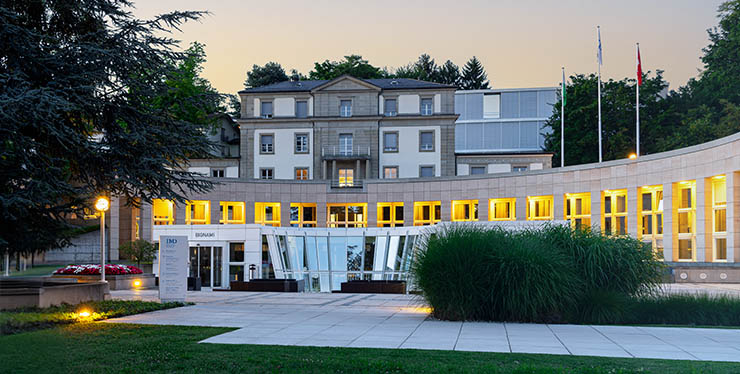A leadership training program is a structured experience designed to help individuals develop and enhance their leadership skills and abilities. These types of programs typically include a combination of theory and practical elements, and may include topics such as communication, decision-making, problem-solving, strategic planning, team management, and personal growth and development.
Leadership training programs can take many different forms, such as workshops, seminars, classes, or online courses. They can be designed for individuals at all levels of an organization, from entry-level employees to senior executives. The goal of a leadership training program is to equip participants with the knowledge, skills, and confidence needed to effectively lead and manage others, and to achieve their goals and objectives both personally and professionally.
This guide will explore the top 6 FAQs about leadership programs to build on your leadership skills and become exposed to different industries, cultures and people to get a more holistic view of leadership.
1. So what exactly are leadership training programs?
An executive leadership program is a type of leadership training specifically designed for executives and senior leaders within an organization. These programs are typically more comprehensive and intense than general leadership training programs, and aim to develop the specific skills and competencies required for success at the highest levels of leadership.
Executive leadership programs often focus on topics such as strategy, decision-making, crisis management, communication, negotiation, and personal and organizational transformation. They may also include elements of mentoring, coaching, and team building, and often involve a combination of classroom instruction, case studies, simulations, and individual and group work.
Executive leadership programs are typically tailored to the needs of the individual organization and its leaders, and may be designed to meet specific business objectives and challenges.
2. Are all leadership training programs created equal?
No, definitely not. Leadership training programs are only as good as those who develop them and those who teach them. The goal of an executive leadership program is to help senior leaders develop and refine their leadership skills, build their professional networks, and gain a deeper understanding of the challenges and opportunities of leadership at the highest levels.
By participating in an executive leadership program, executives can gain the tools and knowledge they need to lead their organizations to success and drive their own professional growth and development.
There are many different organizations across the world delivering leadership training programs, including business schools, such as IMD, universities or consulting companies. Finding the best provider can often be a daunting task, however there are reputable sources such as the Financial Times Executive Education rankings – that can help provide more context and guidance.
3. Isn’t on-the-job learning enough?
On-the-job learning is absolutely necessary, however this is not always enough if you really want to be a truly effective leader. As we progress through our careers we are often exposed to different scenarios, which help us grow as leaders. However, sometimes it is not possible to achieve this within your own organization.
Executive leadership programs will typically have a class size of between 30 – 50 leaders from around the world. This increases the exposure that you have to differing cultures, and industries, helping to give new perspectives on the challenges leaders in different organizations face.
External training may not always be the answer for your specific needs, however failure to seek external influences can often hold you back from reaching your true potential as a leader.
4. How can I find the best leadership training programs?
Finding the best leadership training program for you depends on several factors, including your goals, budget, and time constraints. Here are some steps you can take to find the best program for your needs:
Identify your goals: What do you hope to achieve from a leadership training program? Are you looking to develop specific skills, such as communication or team management, or are you looking for a more comprehensive leadership development experience? Having a clear understanding of your goals will help you determine which type of program will best meet your needs.
Research your options: Look for programs that are tailored to your specific needs and goals. You can search online for leadership training programs, ask for recommendations from colleagues, or check with professional organizations or trade associations for recommendations.
Evaluate the program provider: Check the credentials of the program provider, including their experience and expertise in delivering leadership training. Look for reviews from past participants and see if they have a good reputation in the industry.
Consider the format: Leadership training programs are available in various formats, including workshops, online courses, and executive leadership programs. Consider which format is most convenient and feasible for you based on your schedule and budget.
Assess the content: Evaluate the content of the program to ensure it covers the topics and skills you want to develop. Look for programs that use a variety of instructional methods, such as interactive exercises, case studies, and role-playing, to help you apply what you learn.
Consider the cost: Determine your budget and look for programs that offer good value for your investment. Consider the cost of the program, as well as any additional expenses, such as travel, lodging, and meals.

5. What are the keys to lasting impact?
The short answer is that a good executive leadership program helps you understand your leadership style, develop and practice it, and then support you to apply this in your real world. Some of the elements you should look for include:
- Emphasis on self-awareness and human dynamics
- Relevance to real-life issues, with meaningful examples
- Support to create your own personal leadership development plan
- Experience-based learning
- Post-program support and coaching
Look for a leadership training program that allows you to examine your leadership style and effectiveness in a safe and supportive environment, with the benefit of honest and impartial feedback. Leadership exercises and professional leadership coaching are useful tools for understanding your leadership goals, recognizing your leadership traits, experimenting with your leadership role, becoming aware of what’s going on within yourself and around you, and identifying the right steps towards improvement.
While a solid base of general leadership concepts and frameworks is necessary, leadership training programs have far greater lasting effects when they are relevant to the specific situations of participants. So you should particularly look for a leadership development program whose agenda includes addressing issues brought by the participants directly, such as building the capacity to lead complex change or making life transitions.
6. How can I be sure I will get the most value out of a leadership program?
Participating in a leadership training program can be a valuable investment in your personal and professional growth, and there are several steps you can take to get the most value from the experience:
Be fully engaged: To get the most out of a leadership training program, it is important to be fully engaged and actively participate in all activities. Ask questions, participate in group discussions, and take the time to reflect on what you learn.
Apply what you learn: Try to apply what you learn in the program to your work and personal life as soon as possible. This will help you retain what you’ve learned and see how it can benefit you in real-world situations.
Network with other participants: Leadership training programs are an opportunity to network with other individuals who are also interested in developing their leadership skills. Building relationships with these individuals can help you expand your professional network and gain new perspectives.
Take advantage of follow-up resources: Many leadership training programs offer follow-up resources, such as coaching, mentoring, or additional training sessions. Take advantage of these resources to continue your growth and development after the program is complete.
Set achievable goals: Before starting the program, set achievable goals for what you hope to achieve. Throughout the program, track your progress and celebrate your accomplishments to keep yourself motivated.
Share what you learn: Share what you’ve learned with others, such as your colleagues, family, and friends. This will help reinforce what you’ve learned and demonstrate the value you’ve gained from the program.
By being fully engaged, actively applying what you learn, and taking advantage of the follow-up resources available to you , you can get the most value from your leadership training program and achieve your personal and professional goals.
Get the latest leadership content in your inbox 💌

